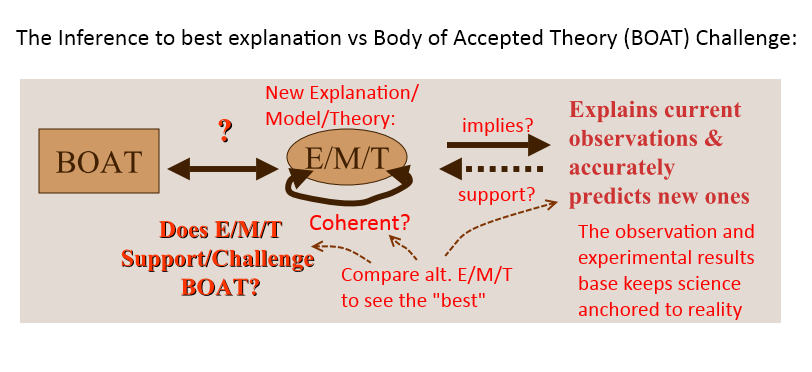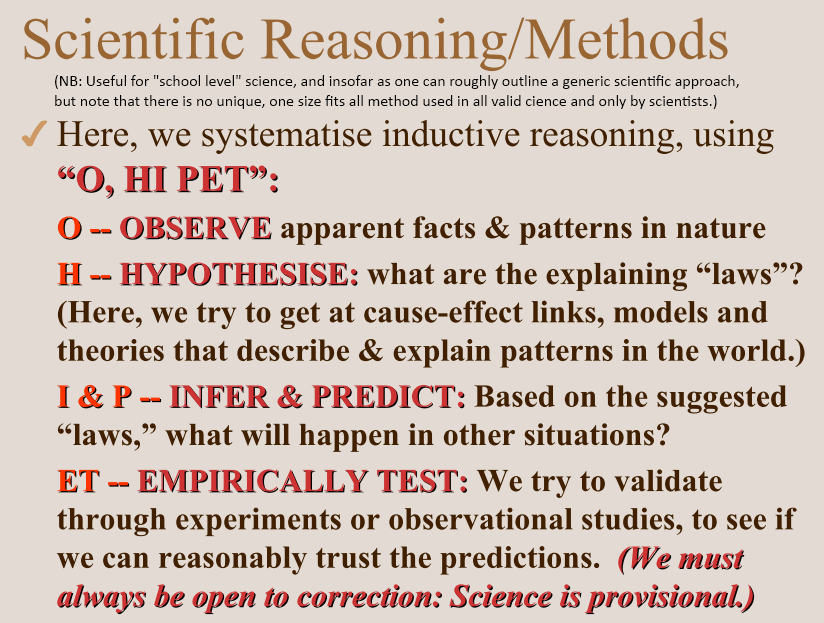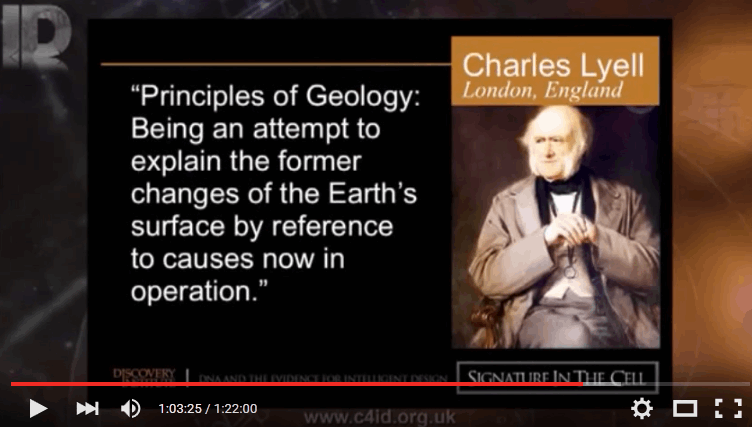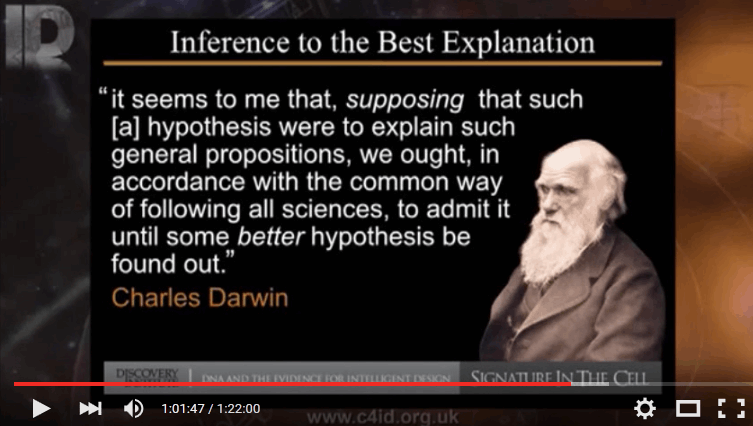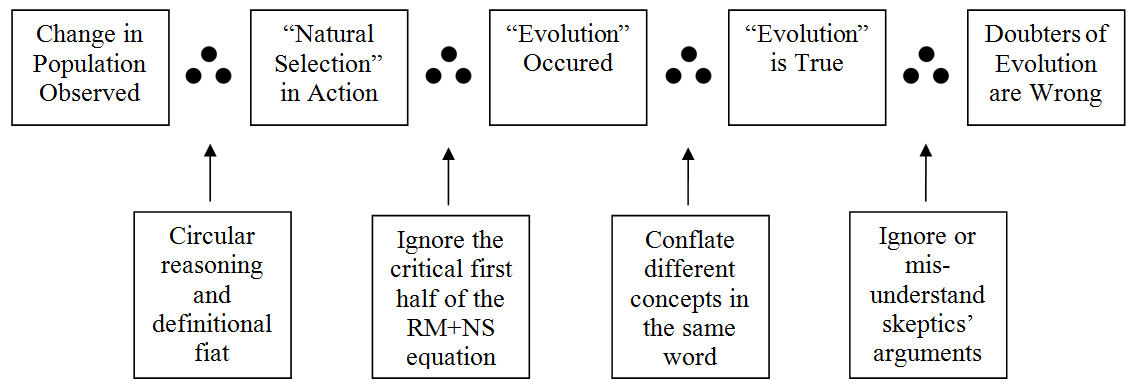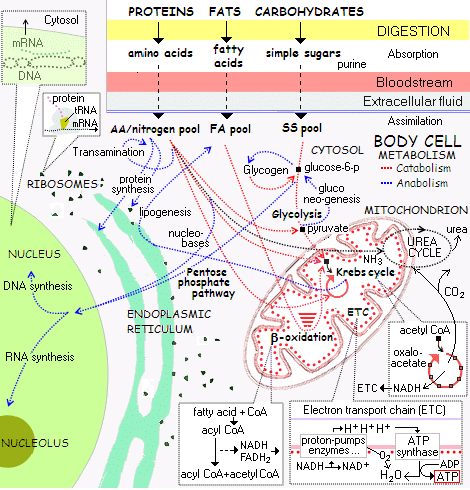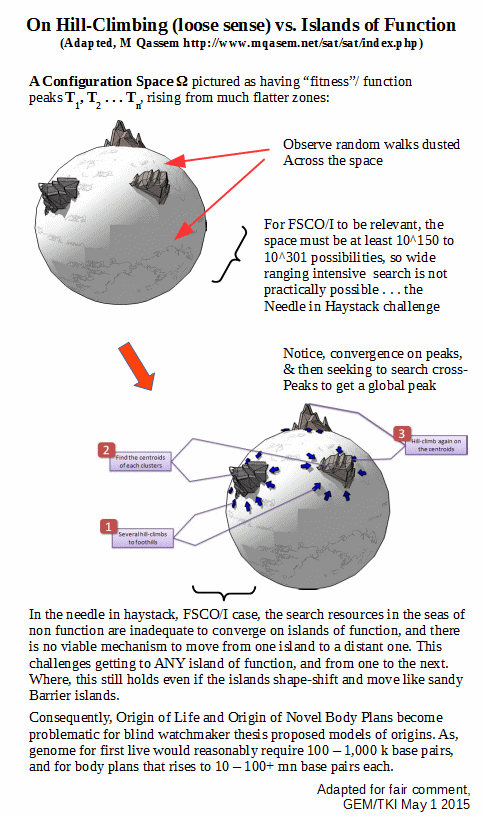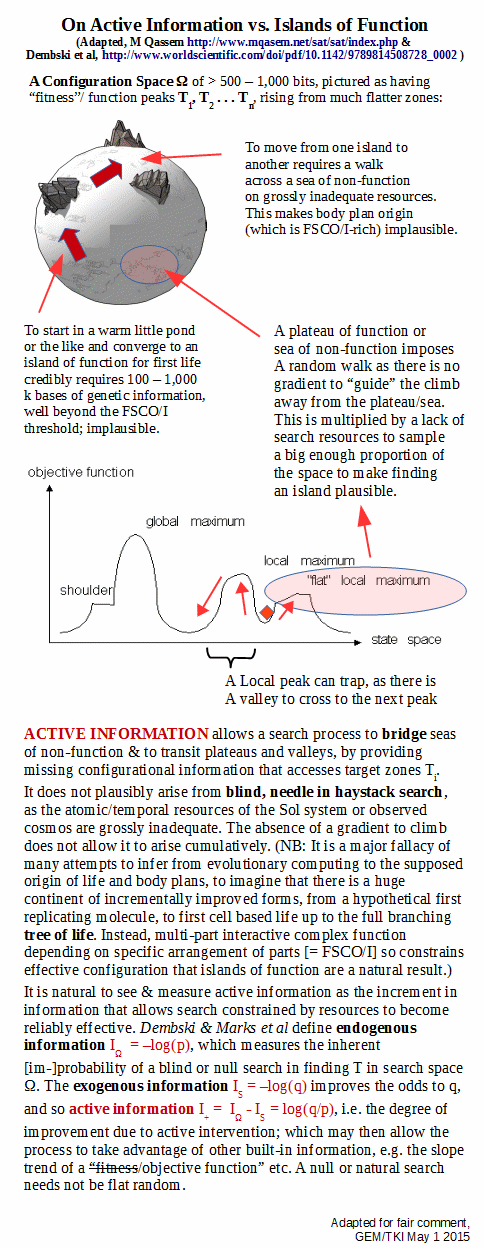It does not take a lot of familiarity to know that a common and widely repeated accusation against ID is that it is “creationism in a cheap tuxedo,” that it tries to smuggle the strictly verboten “supernatural” into scientific thought on origins, and that it is a god-of-the-gaps appeal to ignorance by way of we don’t know what happened so goddidit.
In fact, every one of these assertions is false — and in light of easily accessible corrective facts and cogent argument, such are little more than a strawman tactic.
(But in a day of widespread, conscience benumbed, en-darkened intellectually blind sociopathic evil where ruthless agit-prop, spin tactics and message dominance too often subvert duties of care to fairness, accuracy, truth and reason, just because something is true does not mean that it will prevail.)
A good place to begin setting the record straight is the NWE article on ID:
>>Intelligent design (ID) is the view that it is possible to infer from empirical evidence that “certain features of the universe and of living things are best explained by an intelligent cause, not an undirected process such as natural selection” [1] Intelligent design cannot be inferred from complexity alone, since complex patterns often happen by chance. ID focuses on just those sorts of complex patterns that in human experience are produced by a mind that conceives and executes a plan. According to adherents, intelligent design can be detected in the natural laws and structure of the cosmos; it also can be detected in at least some features of living things.
Greater clarity on the topic may be gained from a discussion of what ID is not considered to be by its leading theorists. Intelligent design generally is not defined the same as creationism, with proponents maintaining that ID relies on scientific evidence rather than on Scripture or religious doctrines. ID makes no claims about biblical chronology, and technically a person does not have to believe in God to infer intelligent design in nature. As a theory, ID also does not specify the identity or nature of the designer, so it is not the same as natural theology, which reasons from nature to the existence and attributes of God. ID does not claim that all species of living things were created in their present forms, and it does not claim to provide a complete account of the history of the universe or of living things.
ID also is not considered by its theorists to be an “argument from ignorance”; that is, intelligent design is not to be inferred simply on the basis that the cause of something is unknown (any more than a person accused of willful intent can be convicted without evidence). According to various adherents, ID does not claim that design must be optimal; something may be intelligently designed even if it is flawed (as are many objects made by humans).
ID may be considered to consist only of the minimal assertion that it is possible to infer from empirical evidence that some features of the natural world are best explained by an intelligent agent. It conflicts with views claiming that there is no real design in the cosmos (e.g., materialistic philosophy) or in living things (e.g., Darwinian evolution) or that design, though real, is undetectable (e.g., some forms of theistic evolution).>>
So, first, ID is about observationally based inductive reasoning in the classic scientific pattern, inference to best current, empirically grounded explanation:
Here, we see that a scientific explanation, model or theory must be empirically/factually adequate, it must be coherent logically and dynamically, and it should be in some reasonable sense superior to alternatives that have been put forth. Though obviously, serious candidate explanations will be scientific in nature even if they are not currently the best explanation in hand. and, insofar as such scientific explanations are inherently provisional and open-ended, status as best explanation is always open to further test.
We may also summarise at simplified level:
In that context, we can with profit consider that in origins science, we seek to account for the deep past and so we cannot directly inspect that past, only traces of it. So, it is a reasonable constraint to insist that serious candidate explanations show causal adequacy to produce relevant effects in the here and now. This is Newton’s vera causa principle that was taken up by Lyell and Darwin.
As Stephen Meyer notes:
It is in this context that the design inference shows its features and empirically grounded scientific character, by contrast with:
First, we can identify a common characteristic of the tech-sci world and that of life, functionally specific complex organisation and associated information:

but also:

as well as:
Where we may compare:
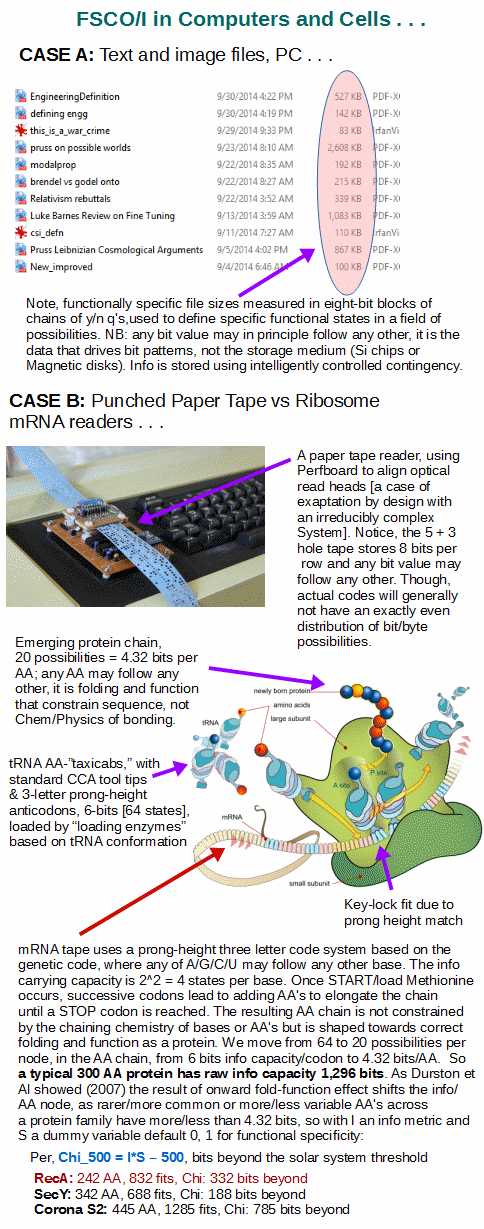 Of course, such is often derided as a silly analogy, but ever since 1802 – 4 Paley went on record in Ch 2 of his Nat Theol:
Of course, such is often derided as a silly analogy, but ever since 1802 – 4 Paley went on record in Ch 2 of his Nat Theol:
>>Suppose, in the next place, that the person who found the watch should after some time discover that, in addition to all the properties which he had hitherto observed in it, it possessed the unexpected property of producing in the course of its movement another watch like itself — the thing is conceivable; that it contained within it a mechanism, a system of parts — a mold, for instance, or a complex adjustment of lathes, baffles, and other tools — evidently and separately calculated for this purpose . . . .
The first effect would be to increase his admiration of the contrivance, and his conviction of the consummate skill of the contriver. Whether he regarded the object of the contrivance, the distinct apparatus, the intricate, yet in many parts intelligible mechanism by which it was carried on, he would perceive in this new observation nothing but an additional reason for doing what he had already done — for referring the construction of the watch to design and to supreme art . . . . He would reflect, that though the watch before him were, in some sense, the maker of the watch, which, was fabricated in the course of its movements, yet it was in a very different sense from that in which a carpenter, for instance, is the maker of a chair — the author of its contrivance, the cause of the relation of its parts to their use.>>
In short, the very case of the self-replicating capability of the living cell needs to be adequately explained, right there at the root of the tree of life, as say we may infer from the Smithsonian:
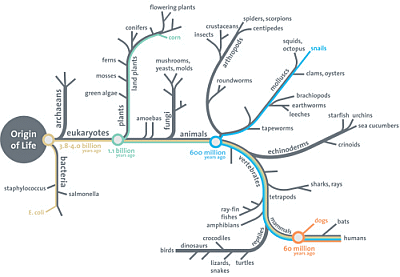 Therefore, on empirical grounds, we need to look very closely indeed at the only actually observed adequate cause of FSCO/I, intelligently directed configuration, i.e. design.
Therefore, on empirical grounds, we need to look very closely indeed at the only actually observed adequate cause of FSCO/I, intelligently directed configuration, i.e. design.
As a result as we look at an object, process, event, network etc aspect by aspect, we may proceed on this inductive base:
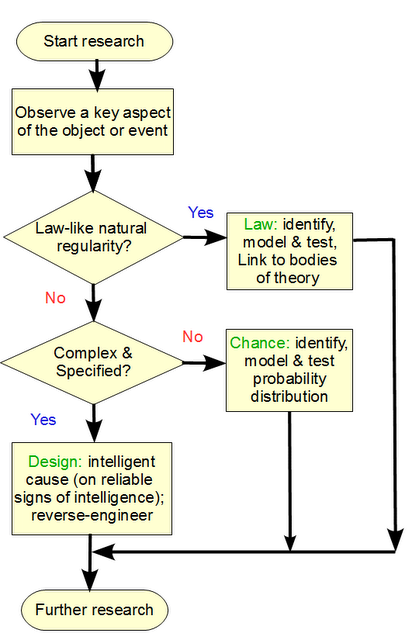 So, from the root up, intelligent design sits at the table as of right.
So, from the root up, intelligent design sits at the table as of right.
Of course, the opening for further research then leads to onward empirical testing. All that would be required to overturn the above logic would be to provide an actually observed, reliable counter-example.
It is precisely the lack of such that keeps the design inference at the table on the strength of trillions of observed cases of origin of FSCO/I. Uniformly, it is design.
And, given the needle in haystack, active information to enhance search challenge
. . . that is unsurprising.
Hence, the issue before us. END
